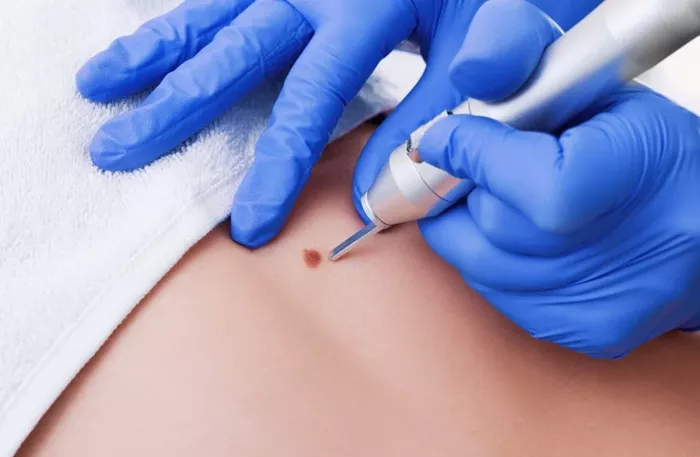Skin tags are small, benign growths that can appear on various parts of the body. They are typically painless and harmless, but many individuals seek their removal for cosmetic reasons or due to irritation. Understanding how to take care of skin tags is essential for those who have them or are concerned about developing them. This article will explore the nature of skin tags, their causes, prevention strategies, and effective care methods.
What Are Skin Tags?
Skin tags, also known as acrochordons, are small, soft growths that hang off the skin. They are usually flesh-colored or slightly darker and connected to the skin by a thin stalk called a peduncle. Skin tags can vary in size and may appear anywhere on the body, although they are most commonly found in areas where skin rubs against skin or clothing, such as:
- Neck
- Underarms
- Groin
- Eyelids
- Under breasts
While they are generally harmless, skin tags can become bothersome if they catch on clothing or jewelry.
Causes of Skin Tags
The exact cause of skin tags is not fully understood, but several factors contribute to their development:
Friction
Skin tags often develop in areas where skin experiences friction or rubbing against other skin or clothing. This is why they frequently appear in skin folds.
Age
The likelihood of developing skin tags increases with age. They are more common in middle-aged and older adults.
Genetics
There may be a genetic predisposition to developing skin tags. If a close family member has skin tags, you may be more likely to develop them as well.
Hormonal Changes
Hormonal fluctuations, particularly during pregnancy or in individuals with conditions like diabetes, can lead to the formation of skin tags.
Obesity
Being overweight or obese is a significant risk factor for developing skin tags due to increased friction in areas where the skin folds.
Medical Conditions
Certain medical conditions, such as metabolic syndrome and insulin resistance, have been associated with an increased risk of skin tag development.
How to Prevent Skin Tags
While there is no guaranteed way to prevent skin tags from forming, several strategies can help reduce the likelihood of their development:
Maintain a Healthy Weight
Maintaining a healthy weight through a balanced diet and regular exercise can minimize the risk of developing skin tags. Obesity is a known risk factor for their formation.
Reduce Friction
To minimize friction in areas prone to skin tags:
- Wear loose-fitting clothing.
- Choose accessories that do not rub against the skin.
- Keep areas prone to friction clean and dry.
Practice Good Hygiene
Regularly washing and drying areas where skin tags may develop can help prevent irritation. Keeping the skin clean can reduce the likelihood of friction-related growths.
Regular Skin Checks
Performing regular self-examinations can help identify any new growths early on. If you notice changes in existing growths or new growths appearing, consult a dermatologist for evaluation.
How to Care for Existing Skin Tags
If you already have skin tags and want to manage them effectively, consider the following care methods:
Avoid Irritation
If your skin tag becomes irritated due to rubbing against clothing or jewelry, try to minimize contact with these items. You can cover the area with a soft bandage to reduce irritation until you decide on further action.
Consult a Dermatologist
For those who find their skin tags bothersome or unsightly, consulting a dermatologist is advisable. Dermatologists can provide safe removal options tailored to individual needs.
Removal Options
There are several methods for removing skin tags that should only be performed by a qualified professional:
Excision
This method involves cutting off the skin tag using surgical scissors or a scalpel after numbing the area with local anesthesia. Excision is usually quick and effective.
Cryotherapy
Cryotherapy involves freezing the skin tag with liquid nitrogen. The freezing process causes the tag to fall off over time.
Cauterization
Cauterization uses electrical current or laser treatment to burn off the skin tag. This method is effective and minimizes bleeding.
At-Home Remedies: Caution Advised
While some people may consider at-home remedies for removing skin tags, it is essential to approach these methods with caution. Home treatments may lead to complications such as infection or scarring. Common at-home methods include:
Tea Tree Oil: Some suggest applying tea tree oil directly onto the tag; however, scientific evidence supporting its effectiveness is limited.
Apple Cider Vinegar: Similar to tea tree oil, apple cider vinegar is often touted as a natural remedy but lacks robust clinical support.
It is always best to consult with a healthcare professional before attempting any at-home treatments.
When to See a Doctor
While most skin tags are harmless and do not require medical attention, there are specific instances when seeing a doctor is necessary:
- If you notice changes in color, size, or shape of an existing tag.
- If a tag becomes painful or starts bleeding.
- If you have concerns about whether a growth is indeed a skin tag or something more serious.
A dermatologist can provide an accurate diagnosis and recommend appropriate treatment options if needed.
Conclusion
Taking care of skin tags involves understanding their nature and implementing preventive measures. While they are generally harmless, individuals concerned about their appearance or experiencing irritation should consult with healthcare professionals for safe removal options. Maintaining good hygiene practices and managing weight can further aid in preventing new growths from forming. Remember that while at-home remedies exist, they should be approached cautiously; professional guidance is always recommended for effective management and treatment of skin tags.
Related topic:
How to Keep Your Skin Healthy As You Age?
How To Take Care Of Elbow Skin?
How Do You Take Care Of A Boil At Home?

